Home » 4 Types of Bra Cups
4 Types of Bra Cups
There are 4 main types of bra cups:
To find the right bra, you need the right band, underwire, and cups. These three components work together to give you the right level of support, shape, and coverage. In this article, we discuss different types of bras. We will divide them along 2 categories – molded vs. unmolded (cut-and-sewn), padded and unpadded. This gives us 4 different types of bra cups. Each type does a different job. Read on to find out which one is right for you.
1. Molded foam cups
Have you dipped your fingers in hot wax, and watch the wax harden into a little cup, in the shape of your finger tip? Your finger tip is the ‘mold,’ and the wax is the ‘molded cup.’
Molded foam cups are made in the same way. The hot mold makes contact with the foam, and the heat helps mold the foam to the desired shape and thickness. Many bras sold in North America use molded foam cups (popular at Victoria’s Secret, La Senza, and La Vie En Rose).


Above: Cross section of a molded foam cup
Molded foam cups tend to be rigid, and your breasts have to conform to their shape, not the other way around. They also tend to be shallow. Because foam has a tendency to “bounce back” after heat treatment, it’s difficult to mold them too deeply.
Molded foam cups can work well for A-DD cups. A flexible, well-made molded foam cup can fit shallower DDD-G cups. They give you a completely smooth look. They can hide some asymmetry. They can be good at manipulating your breast shape (such as creating cleavage).
We don’t recommend molded foam cups for G+ cups. They can’t accommodate the projection typical of this size range. The cups will float on top of your breasts, instead of containing them. Think molded foam cups are right for you? Check out our selection here.
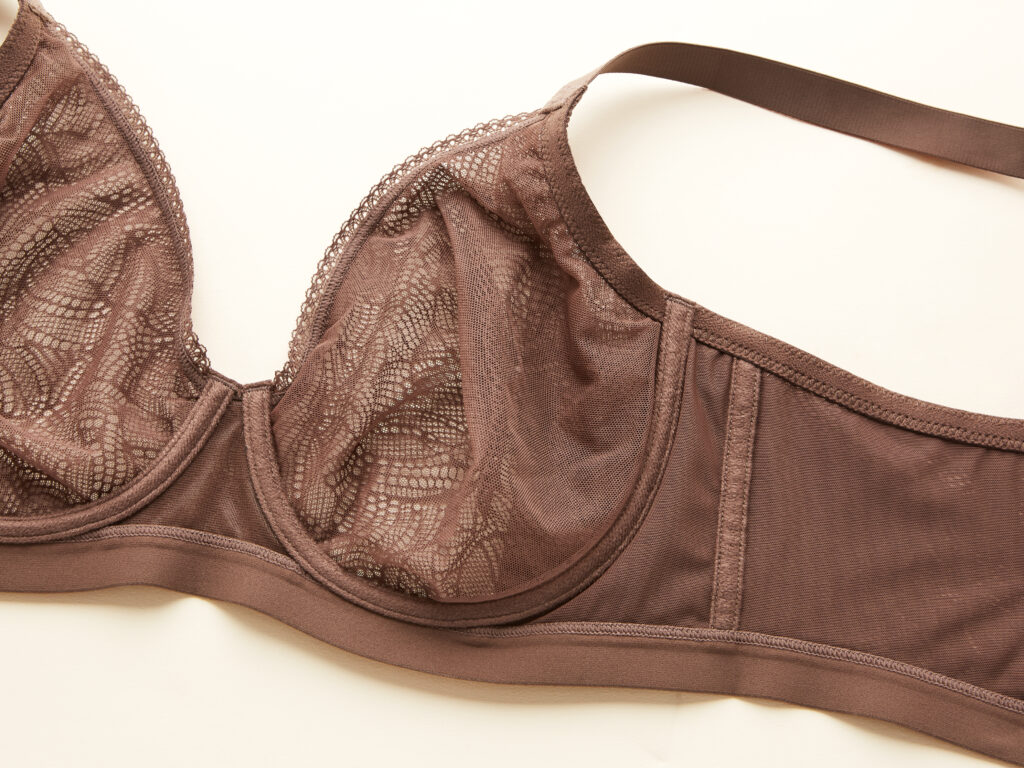
Above: Our popular Zoe has molded fabric cups. There are no seams on the cups.
2. Molded fabric cups
Molded fabric cups use heat to shape fabric instead of foam. The fabric can be lace, mesh, jacquard, tricot, or jersey. The fabric fibers need to be nylon or polyester, which stay intact under high heat. Cotton, modal, and other natural fibers are poor candidates for molding. They tend to break apart, fray, or yellow after heat treatment.
Unlike foam, fabric doesn’t “shrink” after heat treatment. Molded fabric cups can be deep (a good fit for projected breasts). Compared to their cut-and-sewn counterparts, molded fabric cups can be a little less forgiving – though nowhere near as unforgiving as molded foam. In a way, they are the best of both worlds – some shaping qualities without sacrificing flexibility. Here are our molded fabric cup bras.
2. Molded fabric cups
Molded fabric cups use heat to shape fabric instead of foam. The fabric can be lace, mesh, jacquard, tricot, or jersey. The fabric fibers need to be nylon or polyester, which stay intact under high heat. Cotton, modal, and other natural fibers are poor candidates for molding. They tend to break apart, fray, or yellow after heat treatment.
Unlike foam, fabric doesn’t “shrink” after heat treatment. Molded fabric cups can be deep (a good fit for projected breasts). Compared to their cut-and-sewn counterparts, molded fabric cups can be a little less forgiving – though nowhere near as unforgiving as molded foam. In a way, they are the best of both worlds – some shaping qualities without sacrificing flexibility. Here are our molded fabric cup bras.

Above: Our popular Zoe has molded fabric cups. There are no seams on the cups.
3. Seamed cups - unpadded
Seamed cups are made from stitching pieces of fabric together. Sometimes they are called cut-and-sewn bras. Some are made with only fabric (unpadded); some are made with fabric + padding. Some varieties of seamed cups:
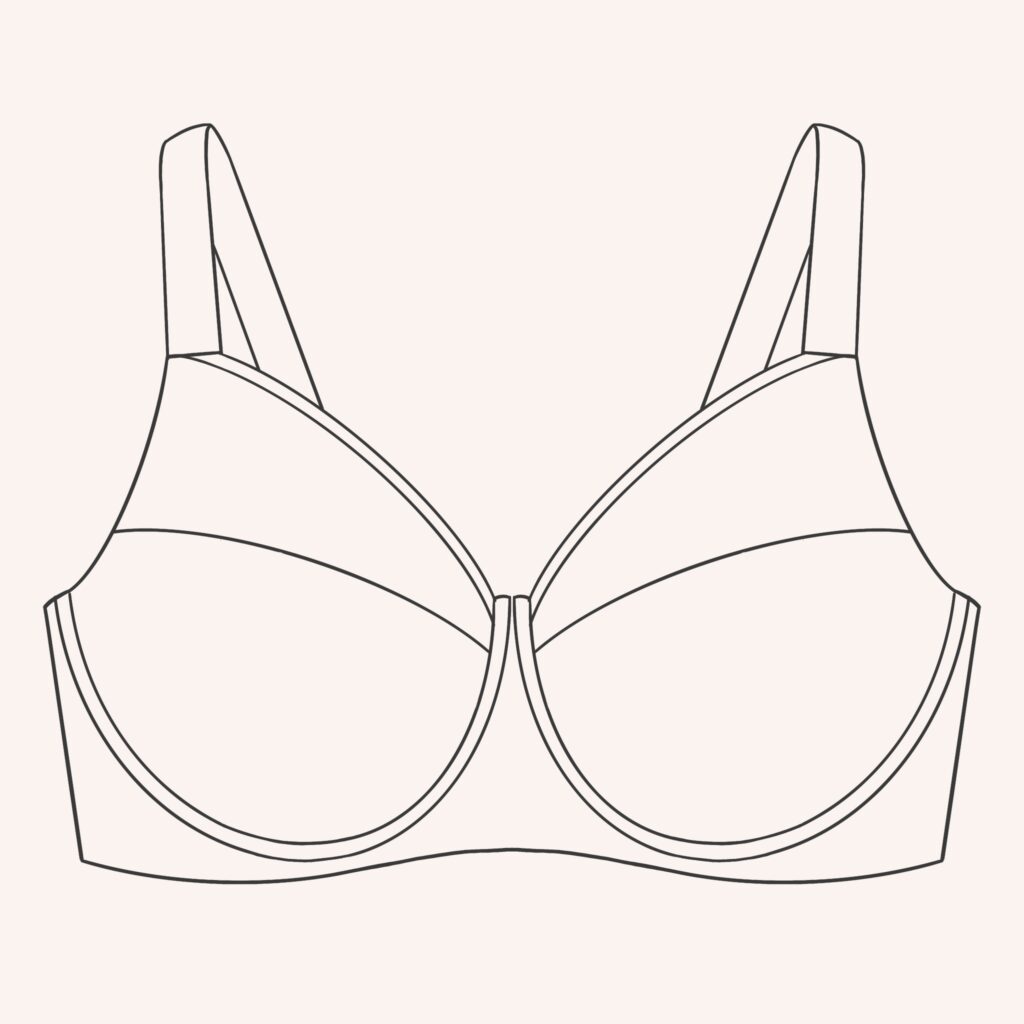
2-part cups
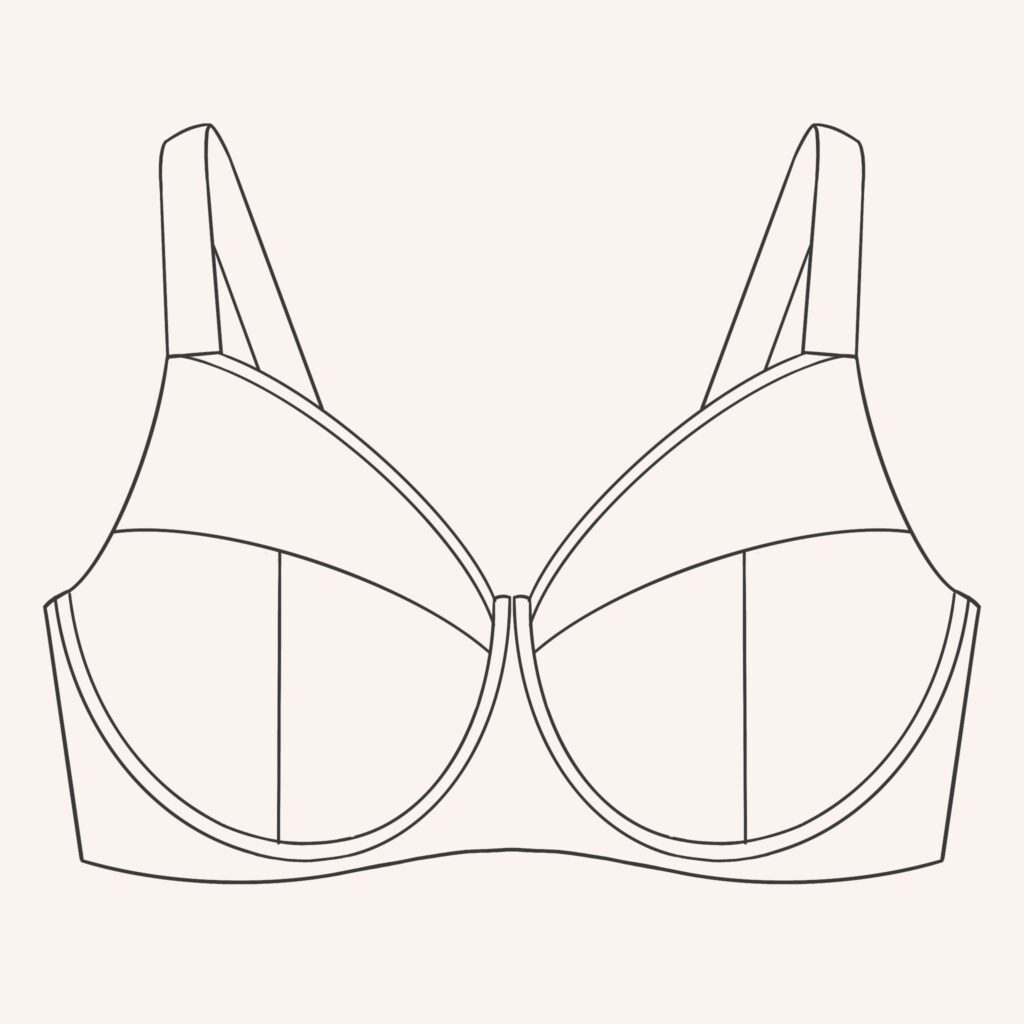
3-part cups (in a “T” shape)
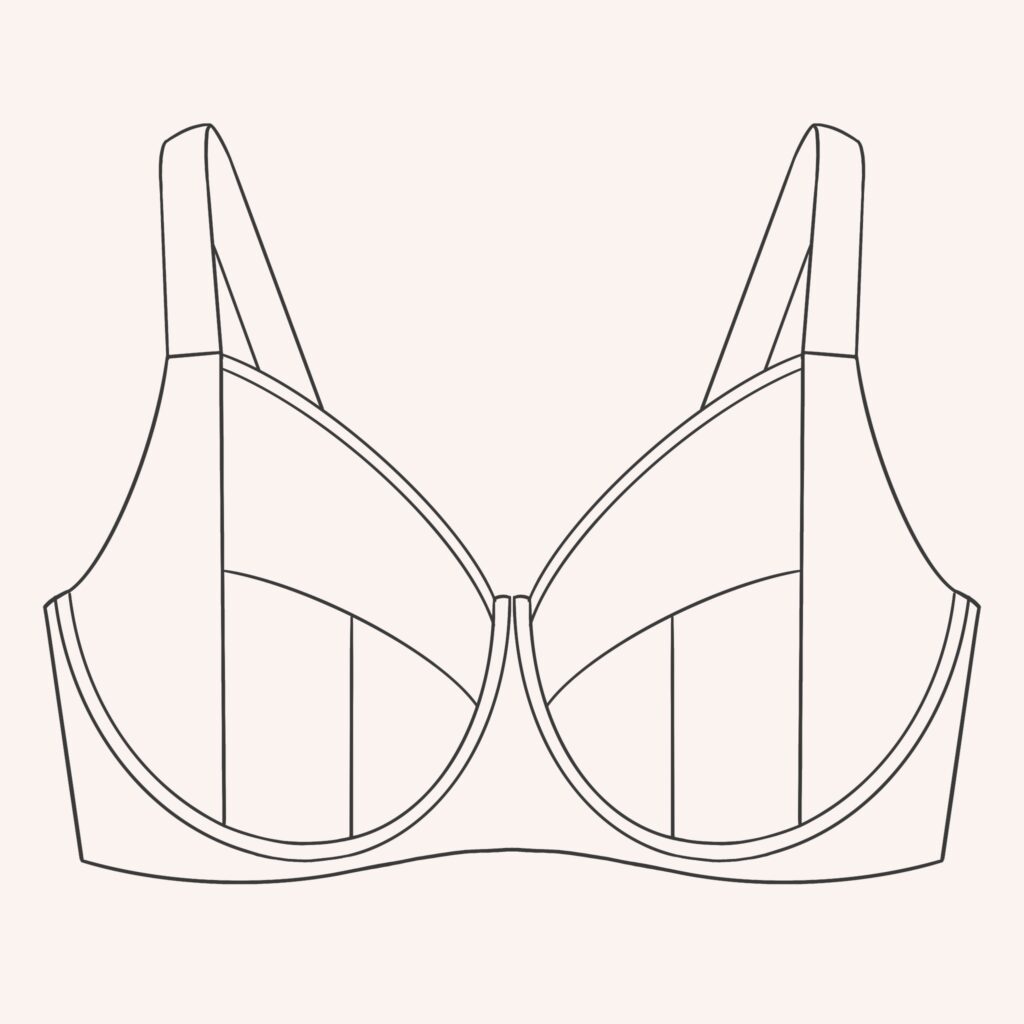
4-part cups (3-part + side sling)
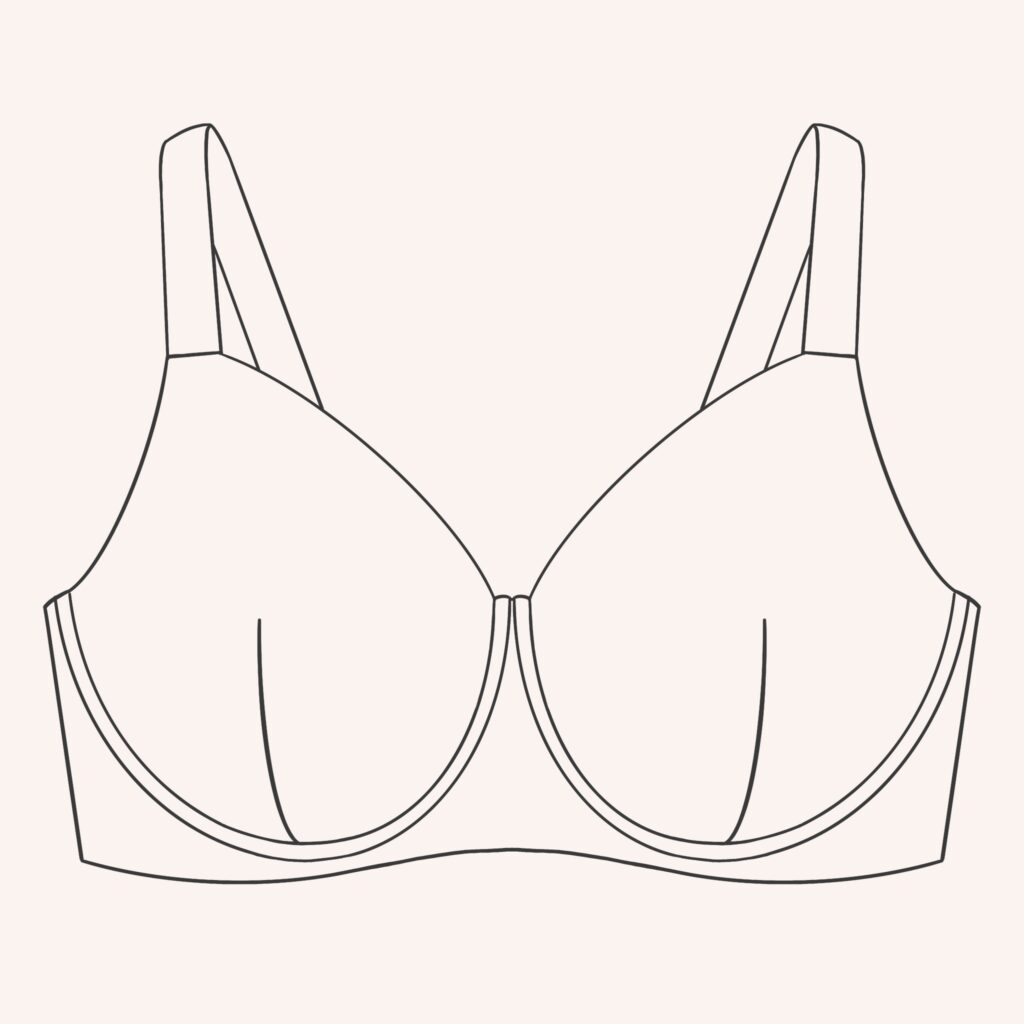
Center seams

2-part cups

3-part cups (in a “T” shape)

4-part cups (3-part + side sling)

Center seams
The cups in a “T” shape are the most stable and supportive (usually 3 or 4 pieces). A 4-part cup will give you a rounder shape than a 2-part cup.

Seamed unpadded cups are friends to projected breasts. The cups can be made as deeply as desired. Because of their superior flexibility and support, they are the most popular choice in the G+ size range. We recommend anyone in the D+ size range to at least try on this type of bra – compared to molded cups, they can feel very “free,” and you are more likely to get a good fit.
Well-made seamed unpadded cups should have minimal visible seams. A pattern that avoids putting the seams at high points and flat seams can help. If you are concerned with visible nipples, choose a bra with rigid cup fabric, or more textural fabrics such as lace or embroidery – it can press the nipples flat. You can find our seamed cup bras here.
4. Seamed cups - padded
Cups made from a combination of fabric and padding stitched together. Unlike a molded cup, which is made from a single piece of padding, seamed cups use several pieces of padding.
Seamed padded cups are a great option if you are too projected to wear molded cups, but still want some nipple coverage. The fibers sandwiched between the fabrics is usually polyester, which is good at keeping its shape. All Understance bras in this category are made with cotton-lined cups. Here are our padded seamed cup bras.
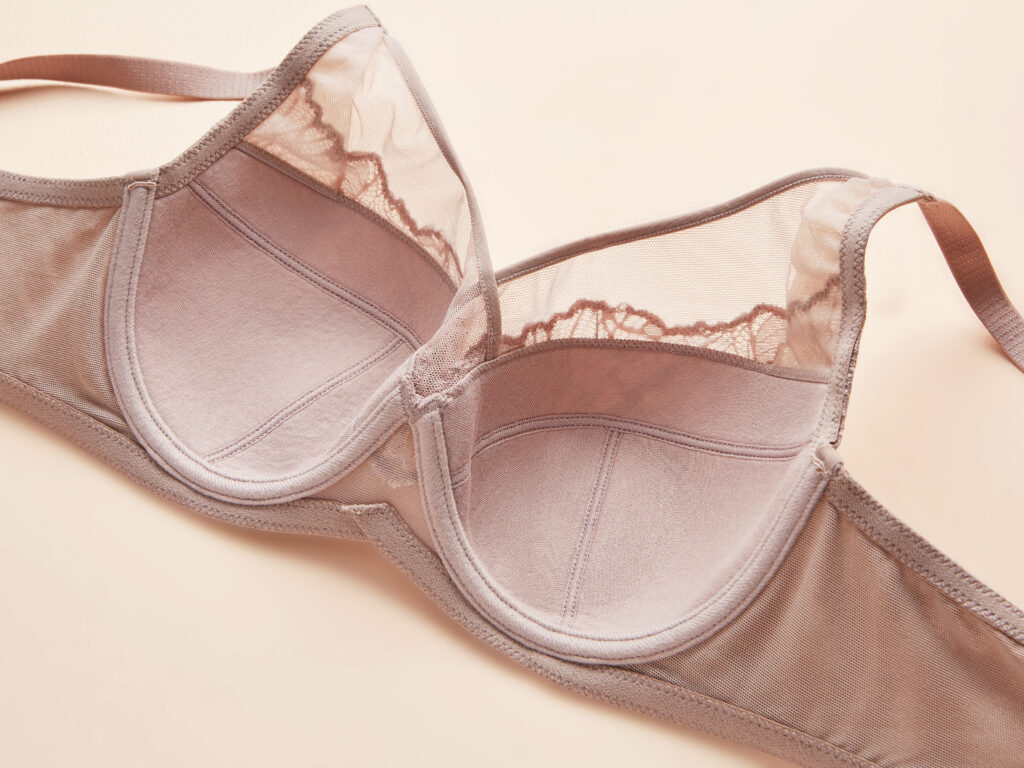
Above: Inside of a seamed padded cup
